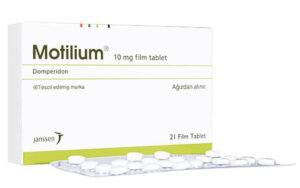 When “fear of the unknown” is mentioned as a main trigger for postpartum depression and perinatal mood and anxiety disorder (PMAD), it’s not meant to conjure up images of ghouls or extraterrestrial invaders. Rather, “fear of the unknown” is used in the context of what many women feel at the start of their pregnancy and the beginning of their care for their newborn child. When I gave birth to my first son, the notion that there was this new, tiny person who was completely dependent on me for everything hit me deeply. This new awareness and responsibility, coupled with this new, very deep emotional attachment, was enough to send me a bit out of balance.
Today, I am far more comfortable with the idea that I cannot know or predict what will happen tomorrow or next week. But, for a pregnant woman and new mother, the fear of the unknown can be a crippling anxiety that can extend far into the future.
The term perinatal can be used to describe the full period from a fetus’ conception until a baby reaches its first birthday. Postpartum, on the other hand, literally means “after the birth”. Still, the two terms “perinatal mood and anxiety disorder” and “postpartum depression” are often used interchangeably to describe the condition of emotional and behavioral problems that can arise during pregnancy and in the first year after the birth of the baby. Moving forward in the rest of this blog, I will use the more general term perinatal mood and anxiety disorder (unless the point relates specifically to symptoms that only become evident after the baby is born).
When I was a new mother, I wish I had known that roughly 10-20% of pregnant women show one or more symptoms of PMAD through to the end of the first year after birth. Getting help is essential because these disorders can threaten the health of both mother and baby and the stability of the family. I consider myself one of the lucky ones because although these conditions were not named back then, I had the benefit of living near a lot of family who were instrumental in helping me through that first year of raising our son.
Back to the stats. The reported incidence of 10-20% is very likely an underestimate since most people are slow to turn to healthcare providers to report symptoms and seek relief from emotional or psychological issues. This is especially true for mothers of newborn babies because not only is this supposed to be a time of overwhelming joy – but new mothers are so busy in the service of the baby that they often forget themselves. Couple that with a fear of outside interference, such as child protective services, which could become involved if an issue of anxiety or mood problems is regarded as being a threat to the baby’s wellbeing.
I, like so many women before and after me, tend to ignore their symptoms because they are not certain whether these are the expected changes that come during pregnancy or postpartum. I just assumed this was the way it was. The common term “baby blues” makes it sound as though having emotional upsets or bouts of depression and anxiety attacks is an expected outcome of giving birth. “Baby blues” isn’t a psychiatric term, but more than half of new mothers go through an adjustment period starting within the first few days after childbirth. Mothers can feel overwhelmed with unexpected emotions, feel anxious, and suffer bouts of insomnia.
It is important to know that if these symptoms persist beyond the first two weeks, professional help should be sought.
When “fear of the unknown” is mentioned as a main trigger for postpartum depression and perinatal mood and anxiety disorder (PMAD), it’s not meant to conjure up images of ghouls or extraterrestrial invaders. Rather, “fear of the unknown” is used in the context of what many women feel at the start of their pregnancy and the beginning of their care for their newborn child. When I gave birth to my first son, the notion that there was this new, tiny person who was completely dependent on me for everything hit me deeply. This new awareness and responsibility, coupled with this new, very deep emotional attachment, was enough to send me a bit out of balance.
Today, I am far more comfortable with the idea that I cannot know or predict what will happen tomorrow or next week. But, for a pregnant woman and new mother, the fear of the unknown can be a crippling anxiety that can extend far into the future.
The term perinatal can be used to describe the full period from a fetus’ conception until a baby reaches its first birthday. Postpartum, on the other hand, literally means “after the birth”. Still, the two terms “perinatal mood and anxiety disorder” and “postpartum depression” are often used interchangeably to describe the condition of emotional and behavioral problems that can arise during pregnancy and in the first year after the birth of the baby. Moving forward in the rest of this blog, I will use the more general term perinatal mood and anxiety disorder (unless the point relates specifically to symptoms that only become evident after the baby is born).
When I was a new mother, I wish I had known that roughly 10-20% of pregnant women show one or more symptoms of PMAD through to the end of the first year after birth. Getting help is essential because these disorders can threaten the health of both mother and baby and the stability of the family. I consider myself one of the lucky ones because although these conditions were not named back then, I had the benefit of living near a lot of family who were instrumental in helping me through that first year of raising our son.
Back to the stats. The reported incidence of 10-20% is very likely an underestimate since most people are slow to turn to healthcare providers to report symptoms and seek relief from emotional or psychological issues. This is especially true for mothers of newborn babies because not only is this supposed to be a time of overwhelming joy – but new mothers are so busy in the service of the baby that they often forget themselves. Couple that with a fear of outside interference, such as child protective services, which could become involved if an issue of anxiety or mood problems is regarded as being a threat to the baby’s wellbeing.
I, like so many women before and after me, tend to ignore their symptoms because they are not certain whether these are the expected changes that come during pregnancy or postpartum. I just assumed this was the way it was. The common term “baby blues” makes it sound as though having emotional upsets or bouts of depression and anxiety attacks is an expected outcome of giving birth. “Baby blues” isn’t a psychiatric term, but more than half of new mothers go through an adjustment period starting within the first few days after childbirth. Mothers can feel overwhelmed with unexpected emotions, feel anxious, and suffer bouts of insomnia.
It is important to know that if these symptoms persist beyond the first two weeks, professional help should be sought.
Symptoms of depression or anxiety while pregnant
The symptoms can appear at any time during pregnancy. The most frequently reported symptoms of depression while a woman is pregnant include:- Feeling sad or ‘down’
- Crying for no particular reason
- Mild mood swings
- Lower interest in becoming a mother or fears of not being a good mother
- Fear of the future, giving rise to anxiety and tension
- Insomnia and feeling tired even if sleeping more than usual
- Suicidal thoughts
- Lacking energy
- Changes in appetite and weight
- Generalized Anxiety Disorder (GAD), which includes uncontrollable worries about everyday issues, consuming a significant amount of time and affecting work, home and relationships.
- Pre-diagnosed obsessive-compulsive disorder (OCD), which may worsen during pregnancy. Symptoms include some violent thoughts about harming herself or the fetus.
Symptoms of postpartum depression and anxiety
- Difficulty focusing, concentrating, or making decisions
- Mood instability
- Panic disorder typically manifests as a new mother avoids being alone with the baby for fear of having a panic attack.
- Posttraumatic stress disorder (PTSD) in which women experience flashbacks or nightmares and have bouts of high anxiety.
- Excessive anxiety about the baby’s condition
- Fatigue, sleep disturbances, restlessness, and irritability
- Weepiness
- Anger and obsessive behavior
- Feelings of shame or guilt
- Loss of appetite
Differentiating between postpartum depression and postpartum psychosis
Postpartum psychosis is a severe psychiatric disorder that affects roughly one or two mothers per 1000 new births. It usually begins within the first week after delivery, with early signs similar to ordinary postpartum depression but with more significant effects. The woman may develop signs of being disoriented to time and place, exhibit delusions and hallucinations, express suicidal or infanticidal ideation, or start to harm herself or the baby. It is a medical emergency that requires immediate attention and treatment. Women who have a history of bipolar disorder or previously experienced episodes of psychosis outside of pregnancy are more likely to experience postpartum psychosis. It also has a recurrence rate of 70-90% in subsequent pregnancies.The importance of treating PMAD
New mothers can experience one or a combination of the symptoms of perinatal mood and anxiety disorders, and they may develop at any point during pregnancy and the first year after giving birth. If PMAD is left untreated, the long-term effects can have lasting negative health effects for both mother and baby, as well as other family members. Untreated mental illness during pregnancy can result in preterm delivery, low birth weight, an increased risk of behavioral problems and poor learning and cognitive development for the infant. There is a particular danger of a mother turning to mood-altering substances like alcohol and cannabis to lessen her own feelings of depression and anxiety. Both of these can exaggerate the impact on the baby because it can lead to a disconnect between mother and child and are a personal health risk. Overdose and suicide are the two most common causes of a mother’s death in the first year postpartum.Known influences causing perinatal mood and anxiety problems
There is a strong possibility that PMAD may be coming from specific biological causes in the mother. For this reason, an examination by an experienced doctor is essential before any treatment is undertaken. The factors that doctors look for include:- Any incidence of postpartum depression, anxiety or postpartum psychosis in previous pregnancies. PMAD has a known recurrence rate of more than 50%, and postpartum psychosis has a known recurrence rate of between 80% and 90%.
- Any family history of postpartum depression or postpartum psychosis, especially in first-degree relatives (mothers or sisters)
- Any incidence of depression or anxiety during the menstrual cycle
- A known history of substance abuse (drugs and alcohol)
- Chronic illness or medical illness or obstetrical complications during this or prior pregnancies
- Unusual prior births (multiple births, preterm birth, low birth weight)
- Any history or signs of domestic violence or abuse
- A stressful lifestyle, such as poverty or recent immigration
- Limited social support (a one-parent family)
- Relationship problems
- Young age or unplanned pregnancy
















